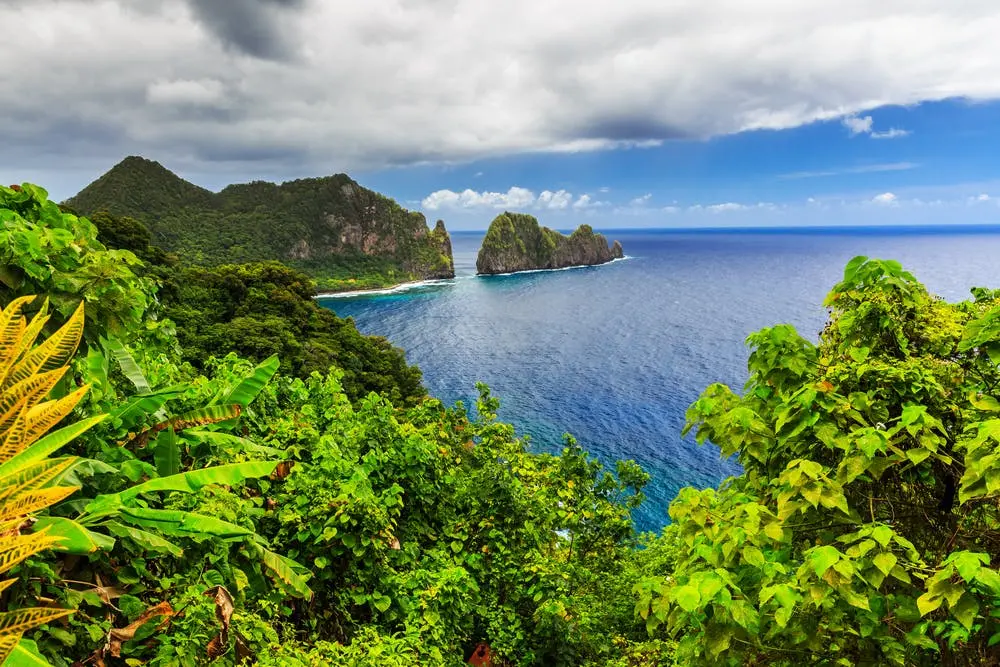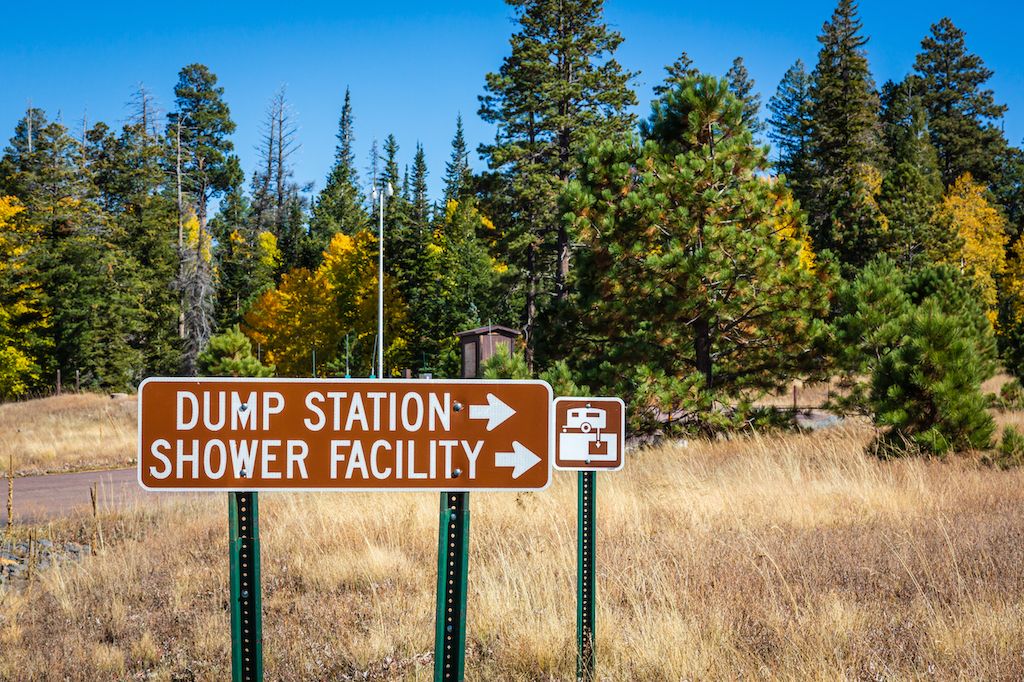National Park of American Samoa

WIDE-RANGING INVENTORY
From affordable pop-ups to luxury motorhomesLARGEST RV RENTAL MARKETPLACE
Thousands of 5 star reviews from happy customersSECURE AND MOST TRUSTED
24/7 Emergency roadside assistance on every booking- Home
- National Parks
- National Park of American Samoa
If you’re looking for the most exotic answer to a domestic getaway, you might just find it in the National Park of American Samoa, a far-off U.S. territory spread over three small islands in the South Pacific. This unique land-and-seascape is filled with strange and striking wildlife, fascinating flora, and one of the oldest and richest cultures in all of Polynesia. Historians believe people first came to the Samoan islands from southwest Asia by sea over 3,000 years ago, where they now make their lives with a swath of cultural traits now known as fa'asamoa (fah-ah-SAH-mo-ah). From hiking and beach-walking to snorkeling and SCUBA diving, or even just watching some of the everpresent fruit bats, the National Park of American Samoa is well worth the journey it takes to get there, long though it may be.
The National Park Service describes American Samoa as a “quintessential tropical paradise,” and the weather fits the bill. You can expect warm temperatures and relatively high humidity year-round, punctuated by frequent rain showers. The slightly hotter, wetter summer season stretches from October through May and is followed by a slightly cooler and drier season from June through September. Because violent tropical storms can arise at a moment’s notice, it’s important to always check the forecast before you head out for your day’s adventure.
The National Park of American Samoa is situated on a remote stretch of South Pacific islands and thus is not served by “gateway towns” in the way many of the other national parks are. However, these islands are home to a bright and vibrant community, and services including lodging, restaurants, and public transportation are available across the Samoan islands.
Along with ample opportunities to explore these lands on foot or by sea, the National Park Service and the surrounding communities also host a variety of organized events and spectacles that can round out your Samoan adventure, including traditional dancing and beach ceremonies. The park also celebrates its anniversary yearly on October 31, if you’re looking for a unique alternative to the mainland’s Halloween festivities. Check out the park’s official calendar page here to see what’s coming up.
- Spring 70-80 F
- Summer 70-80 F
- Fall 70-80 F
- Winter 70-80 F
- Coming soon
- Coming soon

National Park of American Samoa Hiking Trails
From steep cliffs offering sweeping panoramas to mysterious tropical jungles to serene sandy beaches, there’s a day hike to fit every adventurer’s ideal tropical paradise experience (and fitness level) at American Samoa. Just be sure to bring an ample supply of water, as well as sun protection and foul weather gear -- the south Pacific sun is no joke, and storms can occur at a moment’s notice!
Below, find a few suggested trails to help get you started. You can also check out the park’s official hiking brochure, available here as a PDF download.
National Park of American Samoa Trails

Things to do Outside National Park of American Samoa
The National Park of American Samoa may be a bit out there, but there’s still plenty to see, eat, and do in the surrounding area. Here are a few favorite restaurants, museums, sightseeing, and shopping opportunities to check out while you’re enjoying paradise on earth.
Restaurants
Shopping
Sightseeing
Discover Nearby Towns and Cities
RV Resorts & Campsites in National Park of American Samoa
Lodging is available on each of the islands of American Samoa with the exception of Olosega. Unfortunately, camping is prohibited within the park, and there aren’t many options for camping on the islands outside of the park boundaries, either -- and it would certainly be difficult to get an RV out there in the first place!
Instead, most visitors turn to commercial lodging options like hotels and beach bungalows, although there’s also a thriving tradition of homestays across the islands. In a homestay, visitors are welcomed into a local inhabitant’s house or fale (thatched beach hut), giving them a first-hand, insider’s perspective on the Samoan culture and lifestyle. Homestays can be arranged on Tutuila, Ofu, and Ta'u within the park boundaries, and may also be available in the surrounding island areas. Click here for full details.

Campgrounds Near National Park of American Samoa

Find the Best Dumpstations Near National Park of American Samoa
Dumpstations Near National Park of American Samoa

How to get to National Park of American Samoa
Although American Samoa is, as its name suggests, an American territory, flights to the island are still treated as international routes by federal standards and will require a valid and up-to-date passport. You may need to demonstrate your intent to eventually leave the islands with a return or onward flight ticket, as well as proving you have enough funds to support your stay -- and you’ll also have to go through customs upon your arrival to the islands and return to the United States.
The most popular airport is Pago Pago International Airport, which is situated on Tutuila Island, which is serviced from Honolulu twice weekly by Hawaii Airlines. There is also an airfield in nearby western Samoa, the International Airport at Upolu, which receives several small flights per week from Australia, New Zealand, and Fiji.
Once you arrive at American Samoa, inter-island travel is achieved via small aircraft, boat, and public transportation. The local fleet of family busses is known as aiga, and they are affordable and frequent (though unscheduled). See the National Park Service’s official directions page for more information about getting to and around the islands.

Frequently Asked Questions
Very few areas of the National Park of American Samoa are accessible for disabled visitors. The scenic overlook at Lower Sauma Ridge is accessible with assistance. The visitor center and restrooms are also accessible. Travel around the island in general may also be a challenge for those using wheelchairs.
Pets are not allowed in public buildings, on public transportation, at beaches, or inside buildings. Pets are also not allowed on hiking trails at the National Park of American Samoa.
Top things to do at the National Park of American Samoa include snorkeling, wandering through tropical forests, observing wildlife at the park, and visiting local villages. Due to the remoteness of the park, most activities will be self-guided and visitors can explore many areas on their own.
No, camping is prohibited at the National Park of American Samoa. However, there is lodging available on most islands. Visitors can also arrange a homestay - staying with a local family on the island to learn about Samoan culture first-hand.
The best time to visit the National Park of American Samoa is from June through September when the weather is slightly cooler and drier. The wet summer season lasts from October through May.
Related
RV Rentals near Campland on the Bay San Diego RV Rentals near Manatee RV Park Ruskin RV Rental Petersburg WV RV Rental Shelbyville IL Explore Brookshire Texas RV Rental South Gate CA RV Rental Pana IL RV Rentals near Camp on the Heart Dickinson RV Rentals near Camper Resorts of America Perris RV Rentals near River N Lakes RV Park Aubrey Boston African American National Historic Site Korean War Veterans Memorial Statue of Liberty National Monument Lolo National Forest Guide Cherokee National Forest Guide Plumas National Forest Guide Valley of the Rogue State Park Guide Crater of Diamonds State Park Guide Holland State Park Guide RV Rentals near Oklahoma City East KOA Choctaw RV Rentals near New York City NorthNewburgh KOA Plattekill RV Rentals near Camp on the Heart Dickinson RV Rentals near East Ashtabula Crossing Valley City RV Rentals near Prairie Dog State Park Norton RV Rental Jesup GA